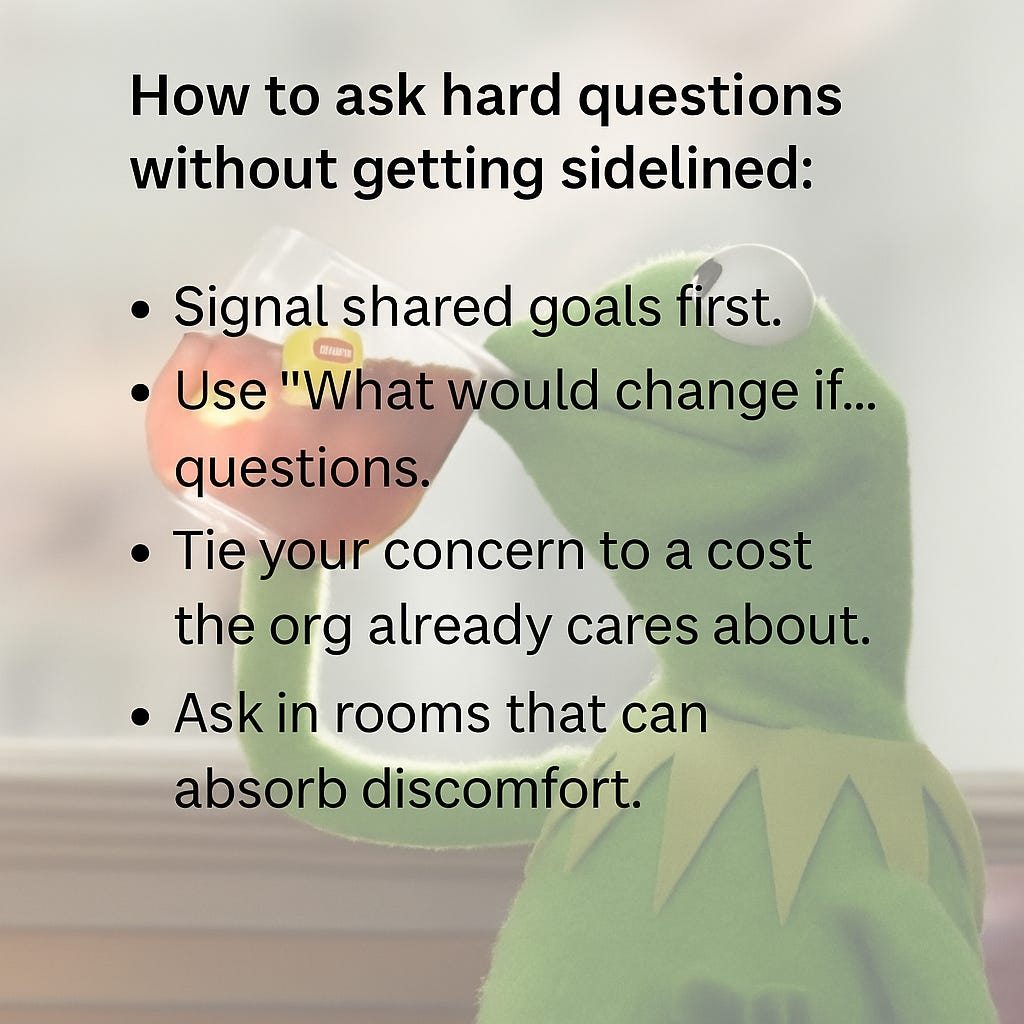Every engineer knows the feeling:
You spot a risk. A contradiction. A pattern no one’s naming.
You bring it up. You’re told, “Good point, but let’s not slow things down.”
Then you’re left off the next thread.
The decision moves forward.
The question is remembered—but you’re not.
This is how clarity gets punished.
Not loudly. Not officially.
But with silence, exclusion, and redirection.
So how do you speak up—without getting cut out?
You don’t go quiet. But you don’t go blunt either.
You learn how to ask hard questions in high-trust formats. You focus on context before critique. And you pick questions that clarify—not corner.
This is tactical rebellion—not defiance. It’s precision inside politics.
1. Signal Shared Goals First
Before you ask the question, state the goal everyone’s aligned on.
“I know the priority is to ship X quickly, especially with Q3 pressure.”
“Given we’re trying to minimize downstream churn…”
This shows you’re not resisting. You’re reinforcing the real intent—and protecting it from regret.
2. Use “What Would Change If…” Questions
Avoid:
“This won’t work.”
“This is risky.”
“Why are we doing this?”
Instead, try:
“What would change if we delayed this by a sprint?”
“What assumptions does this depend on staying true?”
“What would need to be true for this to actually reduce support load later?”
These questions don’t block—they uncover.
3. Tie Your Concern to a Cost the Org Already Cares About
Don’t say:
“This seems off.”
Say:
“If this fails mid-deploy, we’ll lose a week—and still be on the hook for uptime.”
“Skipping this step might look faster, but historically it’s led to two follow-up incidents. Are we okay making that trade?”
This changes your framing from cautious to protective of throughput.
4. Ask in Rooms That Can Absorb Discomfort
Don’t drop existential clarity bombs in Slack.
Ask in:
Pre-reads for planning meetings
1:1s with decision-makers
Architecture reviews with context
Right truth, wrong format = career damage.
Right truth, right format = strategic influence.
5. Offer a Next Move—Even if It’s Just a Question
Never stop at:
“This feels wrong.”
Instead try:
“Would it help if I did a quick write-up of alternatives?”
“Should we revisit this next week with more signal?”
“I can mock a counter-pattern if we’re open to exploring.”
Even modest options show that you’re here to unblock, not just unload.
How to Use This
Clarity doesn’t have to be loud. It just has to be well-placed.
Use this post to check:
Are you anchoring in shared goals?
Are your questions exposing, not attacking?
Are you adding signal—not just pressure?
Because people don’t fear truth. They fear looking unprepared in front of it.
Your job isn’t to be liked. It’s to stay visible while staying honest.



